Показаны сообщения с ярлыком Acura. Показать все сообщения
Показаны сообщения с ярлыком Acura. Показать все сообщения
четверг, 18 августа 2011 г.
2010 Acura ZDX
The new Acura ZDX 2010 four-door sports coupe will arrive in showrooms this winter with its Acura dramatic style, exceptional performance and the latest technology. Acura ZDX bending segment offers stunning coupé style with the added benefit of a commanding presence and flexible utility. True to the prototype model made its debut at the 2009 New York International Auto in April, Acura ZDX production depends on the design emphasizes a key panoramic glass roof, hidden door handles on the back and flares bold defense.
"The Acura ZDX is like you've never seen before Acura," said Jeff Conrad, vice president of Acura sales. "It combines the best attributes of a coupe, a sedan and an SUV - all wrapped in a package beautifully carved -. Who will attract a completely new luxury brand Acura"
Designed, developed and produced entirely in North America, Acura Acura ZDX pioneer in many ways. The Acura ZDX is the first vehicle to bear the title from start to finish in the new Acura design studio dedicated to Torrance, California, with the exterior and interior designers to work closely throughout the process design. Be faithful to the original sketch from the designer of the Acura first wife, Michelle Christensen, Acura ZDX features sensuous curves, shoulders and very sculpted lines of force of character.
понедельник, 25 июля 2011 г.
Acura CL
 The Acura CL is a model of automobile manufactured by Honda's Acura brand from 1997–1999, and from 2001–2003. The CL is often thought to have been a replacement for the Acura Legend coupe. All Acura CLs were built at Honda's plant in Marysville, Ohio alongside the TL and the Honda Accord upon which the Acura CLs were based. The CL was the first Acura to be built in the United States.
The Acura CL is a model of automobile manufactured by Honda's Acura brand from 1997–1999, and from 2001–2003. The CL is often thought to have been a replacement for the Acura Legend coupe. All Acura CLs were built at Honda's plant in Marysville, Ohio alongside the TL and the Honda Accord upon which the Acura CLs were based. The CL was the first Acura to be built in the United States. White Acura CL Concept
White Acura CL Concept Blue Acura CL on The Road
Blue Acura CL on The Road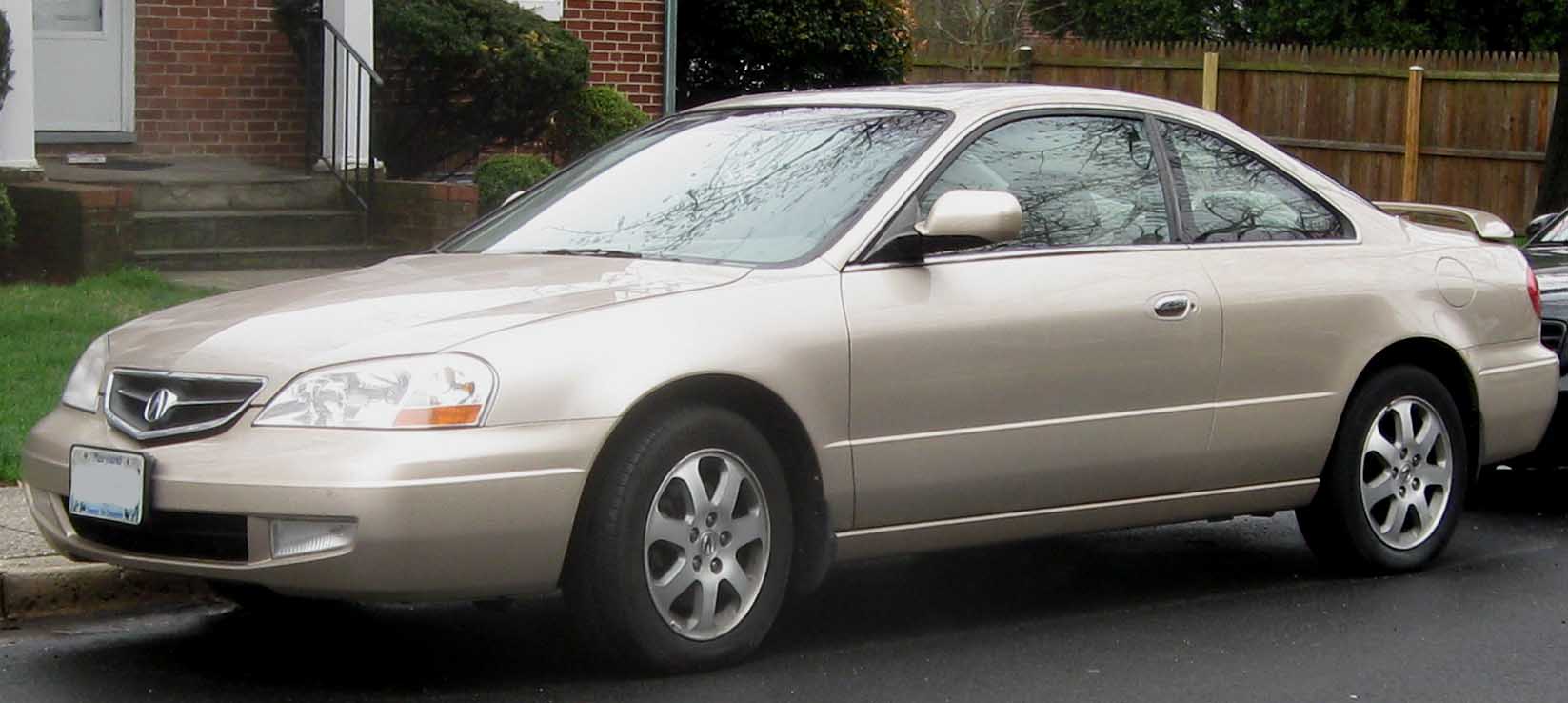 Silver Acura CL View Detail
Silver Acura CL View Detail Acura CL Interior
Acura CL Interior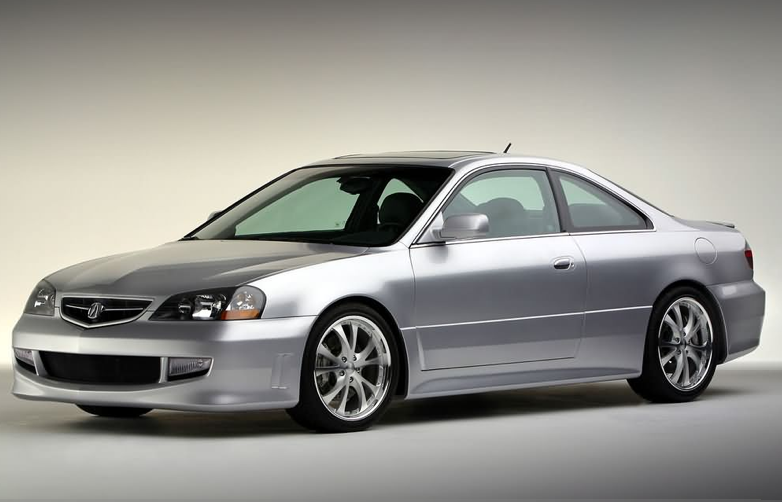 Elegant Silver Acura CL
Elegant Silver Acura CL Following the end of the 1995 model year, the Acura Legend coupe disappeared from Acura's lineup when the sedan version was renamed the Acura RL. The coupe was replaced by the Acura CL for the 1997 model year, following Acura's transition to alphanumeric naming of all of its vehicles (with the exception of the Integra, which was kept in production until the 2001 model year).
Following the end of the 1995 model year, the Acura Legend coupe disappeared from Acura's lineup when the sedan version was renamed the Acura RL. The coupe was replaced by the Acura CL for the 1997 model year, following Acura's transition to alphanumeric naming of all of its vehicles (with the exception of the Integra, which was kept in production until the 2001 model year).
пятница, 22 июля 2011 г.
Acura Vigor
 The Honda Vigor is Acura's mid-size sedan sold in Japan and the United States from 1981 to 1995, and was replaced by the Acura TL/Honda Saber. The Vigor started out in Japan only in the early 1980s as an upper trim level Accord. With later generations the Vigor moved upmarket and received a shared platform with the luxury oriented Honda Inspire: its engine now sat longitudinally as in the second generation Acura Legend. In Japan during the early 1990s, there were five sedans between the Civic and the Legend: the Honda Accord, Honda Ascot and Honda Integra with 4-cylinder engines mounted transversely, and the Vigor and Inspire with 5-cylinder engines mounted longitudinally. The Vigor was sold at Honda Verno dealerships in Japan, and the Honda Inspire was sold at Honda Clio dealerships.
The Honda Vigor is Acura's mid-size sedan sold in Japan and the United States from 1981 to 1995, and was replaced by the Acura TL/Honda Saber. The Vigor started out in Japan only in the early 1980s as an upper trim level Accord. With later generations the Vigor moved upmarket and received a shared platform with the luxury oriented Honda Inspire: its engine now sat longitudinally as in the second generation Acura Legend. In Japan during the early 1990s, there were five sedans between the Civic and the Legend: the Honda Accord, Honda Ascot and Honda Integra with 4-cylinder engines mounted transversely, and the Vigor and Inspire with 5-cylinder engines mounted longitudinally. The Vigor was sold at Honda Verno dealerships in Japan, and the Honda Inspire was sold at Honda Clio dealerships. Beginning September 25, 1981, Honda produced a variant of the Honda Accord badged as the Honda Vigor for Japan only. The first generation Vigor was a higher grade 4-door sedan and 3-door hatchback, with the 1.8 L engine as the only engine available. The Vigor was a sportier, faster, "vigorous" Accord with a higher level of equipment over the more sedate Accord. The Vigor competed with the Toyota Chaser and the Nissan Laurel in Japan. This engine debuted the SOHC 3 valve per cylinder mated to a 5 speed manual or 4 speed automatic transmission with a lock up torque converter. Items that were optional on the Accord, such as cruise control, power windows, and power steering were standard on the Vigor. A trip computer that displayed mileage, driving time, and fuel economy was also standard on the Vigor.
Beginning September 25, 1981, Honda produced a variant of the Honda Accord badged as the Honda Vigor for Japan only. The first generation Vigor was a higher grade 4-door sedan and 3-door hatchback, with the 1.8 L engine as the only engine available. The Vigor was a sportier, faster, "vigorous" Accord with a higher level of equipment over the more sedate Accord. The Vigor competed with the Toyota Chaser and the Nissan Laurel in Japan. This engine debuted the SOHC 3 valve per cylinder mated to a 5 speed manual or 4 speed automatic transmission with a lock up torque converter. Items that were optional on the Accord, such as cruise control, power windows, and power steering were standard on the Vigor. A trip computer that displayed mileage, driving time, and fuel economy was also standard on the Vigor. June 4, 1985 saw the introduction of the redesigned Vigor as a 4-door sedan only. As before, the Vigor was an uplevel Accord. The 1.8 L B18A engine was now offered with dual carburetors and a larger 2.0 L B20A engine was offered Honda's PGM-FI, with the 1.8 L A18A engine as the basic offering. The Vigor had minor cosmetic differences from the Accord, using a different front grille and rear tail lights, as well as a higher specification. May 1987 saw the introduction of the 2.0 Si Exclusive, adding electric retractable side view mirrors as standard. A automatic shift-lock system was added September 1988 on the "MXL Super Stage" trim level.
June 4, 1985 saw the introduction of the redesigned Vigor as a 4-door sedan only. As before, the Vigor was an uplevel Accord. The 1.8 L B18A engine was now offered with dual carburetors and a larger 2.0 L B20A engine was offered Honda's PGM-FI, with the 1.8 L A18A engine as the basic offering. The Vigor had minor cosmetic differences from the Accord, using a different front grille and rear tail lights, as well as a higher specification. May 1987 saw the introduction of the 2.0 Si Exclusive, adding electric retractable side view mirrors as standard. A automatic shift-lock system was added September 1988 on the "MXL Super Stage" trim level.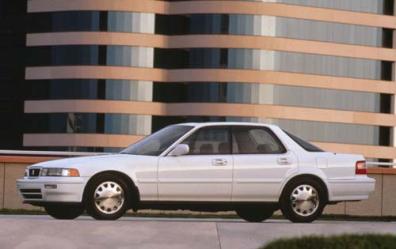 At the launch of the fourth generation Accord, the Vigor was no longer based on the Accord chassis. The third generation Vigor, sold in Japan at Honda Verno dealerships, was shared with the all new Honda Inspire and the new second generation Honda Legend, sold at Honda Clio dealerships. The Vigor was sold in the United States and was badged as the first generation Acura Vigor in 1992. The Honda Inspire was not yet introduced to the USA until the next generation was introduced in 1995, and sold as the Acura 3.2 TL, with the Vigor sold as the Acura 2.5 TL. In Japan, the Vigor competed against the Toyota Chaser.
At the launch of the fourth generation Accord, the Vigor was no longer based on the Accord chassis. The third generation Vigor, sold in Japan at Honda Verno dealerships, was shared with the all new Honda Inspire and the new second generation Honda Legend, sold at Honda Clio dealerships. The Vigor was sold in the United States and was badged as the first generation Acura Vigor in 1992. The Honda Inspire was not yet introduced to the USA until the next generation was introduced in 1995, and sold as the Acura 3.2 TL, with the Vigor sold as the Acura 2.5 TL. In Japan, the Vigor competed against the Toyota Chaser. Production began in 1991 and the vehicle went on sale as a 1992 model in June of that year, slotting between the Integra and the Legend.
Production began in 1991 and the vehicle went on sale as a 1992 model in June of that year, slotting between the Integra and the Legend.Honda's 2.5 L longitudinally mounted 5-cylinder petrol was the only engine available. The transmission is attached to the bottom of the engine, which allowed the powertrain to remain slightly behind the front wheels. This also gave the car a near perfect 50/50 front to rear weight distribution.
 Honda, Acura's parent company, anticipated that the market would move toward small, well-equipped sports sedans akin to the BMW 3-Series and that a less expensive but well equipped alternative to the BMW would be a strong seller; the Vigor was the result of that thinking. They were wrong, and early reviews of the Vigor were not favorable. Comparisons to the Lexus ES 300, which was roomier and softer in ride, generally favored the Lexus as the more appealing buy for the average luxury car buyer, whereas the Vigor was stiff and small.
Honda, Acura's parent company, anticipated that the market would move toward small, well-equipped sports sedans akin to the BMW 3-Series and that a less expensive but well equipped alternative to the BMW would be a strong seller; the Vigor was the result of that thinking. They were wrong, and early reviews of the Vigor were not favorable. Comparisons to the Lexus ES 300, which was roomier and softer in ride, generally favored the Lexus as the more appealing buy for the average luxury car buyer, whereas the Vigor was stiff and small. In response to the reviews, Acura made several changes to the Vigor for the 1994 model year, increasing rear seat room, softening the suspension and re-engineering the steering rack to help isolate the driver from road imperfections in an attempt to make the model more like the ES. The tactics were unsuccessful; buyers favored the more powerful Legend as a sports sedan and still seemed to prefer the ES as an entry-level luxury model.
In response to the reviews, Acura made several changes to the Vigor for the 1994 model year, increasing rear seat room, softening the suspension and re-engineering the steering rack to help isolate the driver from road imperfections in an attempt to make the model more like the ES. The tactics were unsuccessful; buyers favored the more powerful Legend as a sports sedan and still seemed to prefer the ES as an entry-level luxury model.Poor sales and no improvement in market response led Honda to drop the model, and production ended on May 13, 1994. The Vigor was replaced by the 1996 Acura TL/Honda Saber.
Acura Legend
 The Acura Legend, sold as the Honda Legend outside the U.S., Canada, and parts of China, was a luxury vehicle sold from 1986 to 1995 as both a sedan and coupe. It was the first flagship sedan sold under the Acura nameplate, until being renamed in 1996 as the Acura 3.5RL. The 3.5RL was North American version of the (KA9) series Honda Legend. In Japan, the Legend was only offered at Honda Clio dealerships.
The Acura Legend, sold as the Honda Legend outside the U.S., Canada, and parts of China, was a luxury vehicle sold from 1986 to 1995 as both a sedan and coupe. It was the first flagship sedan sold under the Acura nameplate, until being renamed in 1996 as the Acura 3.5RL. The 3.5RL was North American version of the (KA9) series Honda Legend. In Japan, the Legend was only offered at Honda Clio dealerships. The opportunity for Japanese manufacturers to export more expensive models had arisen with the 1980s voluntary export restraints, negotiated by the Japanese government and U.S. trade representatives, restricting mainstream car sales.When the Legend made its appearance into the market, rival companies in Europe, Japan and North America took notice, and quickly introduced or revised current products that could be compared to it. Toyota began development in 1983 with the F1 project, the code name for a secret flagship sedan effort that became the Lexus LS, Nissan updated their premium flagship the President initially introduced in 1966, and in 1988 Lincoln took a new approach to the venerable Continental offering for the first time a front wheel drive sedan with a V6 engine. General Motors introduced the GM H platform (FWD) and GM C platform with FWD, Audi took a fresh approach to the 100 and in 1994 introduced the A6, and BMW introduced the BMW 5 Series (E34) in 1988.
The opportunity for Japanese manufacturers to export more expensive models had arisen with the 1980s voluntary export restraints, negotiated by the Japanese government and U.S. trade representatives, restricting mainstream car sales.When the Legend made its appearance into the market, rival companies in Europe, Japan and North America took notice, and quickly introduced or revised current products that could be compared to it. Toyota began development in 1983 with the F1 project, the code name for a secret flagship sedan effort that became the Lexus LS, Nissan updated their premium flagship the President initially introduced in 1966, and in 1988 Lincoln took a new approach to the venerable Continental offering for the first time a front wheel drive sedan with a V6 engine. General Motors introduced the GM H platform (FWD) and GM C platform with FWD, Audi took a fresh approach to the 100 and in 1994 introduced the A6, and BMW introduced the BMW 5 Series (E34) in 1988. Honda introduced the model in Japan on October 22, 1985 to be their premier luxury model and in North America in 1986 as the top of the line model for its then-new Acura lineup. Sedan models came to the market first, powered by a 151 hp (113 kW) 2.5 L C25A V6, with coupes making their first appearance in 1987, powered by a new 161 hp (120 kW) 2.7 L C27A engine. Sedans received the new engine for 1988.
Honda introduced the model in Japan on October 22, 1985 to be their premier luxury model and in North America in 1986 as the top of the line model for its then-new Acura lineup. Sedan models came to the market first, powered by a 151 hp (113 kW) 2.5 L C25A V6, with coupes making their first appearance in 1987, powered by a new 161 hp (120 kW) 2.7 L C27A engine. Sedans received the new engine for 1988.The Legend was the first production Honda vehicle to offer only a SOHC V6 engine worldwide. The Legend was a result of a joint venture with Britain's Austin Rover Group called Project XX that started in November 1981 with the Austin Rover-Honda XX letter of intent signed by the two companies to replace the Rover SD1 and to provide a luxury vehicle for Honda. The Rover Company had a long established reputation as a luxury car in the United Kingdom and Europe, demonstrated with the Rover P6, and Honda wanted to introduce a luxury car for both domestic Japanese and the United States markets. The joint development produced the Legend and the corresponding British version was the Rover 800-series, of which only the top of the range version - the Sterling - was sold in the United States in competition with the Legend.
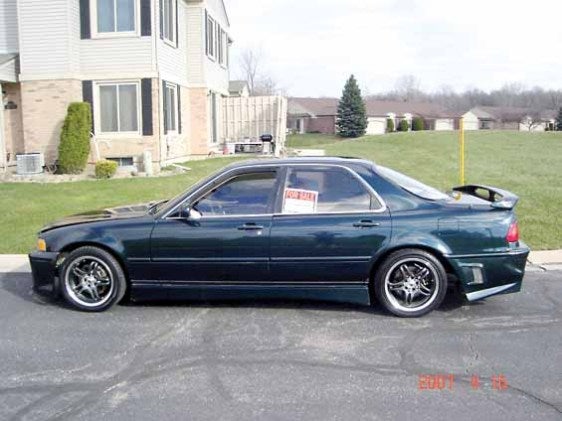 In 1989, the sedan received some minor tweaks, upgrading to the one-piece front headlamps already in use in Japan since the 1986 introduction, a revised front bumper, trunk lid, tail light cluster, and an upgraded double-wishbone rear suspension, with a new alloy wheel appearance. By that time all Legends came equipped with a driver airbag and 4-wheel anti-lock brakes. Other features such as power driver's seat memory for 3 positions were added. High-end LS models featured a trip computer and electronic vehicle monitoring system in the center console and a Bose sound system. It was also joined by the Acura Vigor which set the stage for the larger second generation Legend introduced October 1991.
In 1989, the sedan received some minor tweaks, upgrading to the one-piece front headlamps already in use in Japan since the 1986 introduction, a revised front bumper, trunk lid, tail light cluster, and an upgraded double-wishbone rear suspension, with a new alloy wheel appearance. By that time all Legends came equipped with a driver airbag and 4-wheel anti-lock brakes. Other features such as power driver's seat memory for 3 positions were added. High-end LS models featured a trip computer and electronic vehicle monitoring system in the center console and a Bose sound system. It was also joined by the Acura Vigor which set the stage for the larger second generation Legend introduced October 1991. Second generation units became available October 24, 1990, now using a 200 hp (150 kW) SOHC (C32A) engine mated to either a standard 5-speed manual or an optional 4-speed automatic. The second generation Legend was a larger, more streamlined-looking car (drag coefficients were actually higher at 0.34 for sedans and 0.32 for coupes). The Legend offered a host of features seen on luxury cars of today including speed-sensitive steering, hands-free telephone, automatic climate control, heated leather seats, heated mirrors, 4-wheel ABS disc brakes, seat belt pretensioners and soft-close vacuum-operated doors (coupes only). The rear end appearance of the sedan was adopted from the first generation Legend coupe, as the first generation sedans appearance was very similar to the first generation Subaru Legacy, and Honda also wanted to visually align the appearance of both the Legend coupe and sedan to the Acura NSX. The segment the Legend originally filled was now being served by the Acura Vigor which allowed the Legend to position itself more towards the rear drive Lexus LS and the Infiniti Q45 sedans. Honda decided not to upgrade the size of the engine to a V8 because it would have upstaged the Acura NSX which has a V6 that introduced Honda's VTEC technology.
Second generation units became available October 24, 1990, now using a 200 hp (150 kW) SOHC (C32A) engine mated to either a standard 5-speed manual or an optional 4-speed automatic. The second generation Legend was a larger, more streamlined-looking car (drag coefficients were actually higher at 0.34 for sedans and 0.32 for coupes). The Legend offered a host of features seen on luxury cars of today including speed-sensitive steering, hands-free telephone, automatic climate control, heated leather seats, heated mirrors, 4-wheel ABS disc brakes, seat belt pretensioners and soft-close vacuum-operated doors (coupes only). The rear end appearance of the sedan was adopted from the first generation Legend coupe, as the first generation sedans appearance was very similar to the first generation Subaru Legacy, and Honda also wanted to visually align the appearance of both the Legend coupe and sedan to the Acura NSX. The segment the Legend originally filled was now being served by the Acura Vigor which allowed the Legend to position itself more towards the rear drive Lexus LS and the Infiniti Q45 sedans. Honda decided not to upgrade the size of the engine to a V8 because it would have upstaged the Acura NSX which has a V6 that introduced Honda's VTEC technology. In 1994, all Legends received new front bumpers, a new front grille (L & LS Sedans only), revised trunk lids, and a power tilt-telescoping steering column; the word "Legend" was now spelled out in individual letters on the back. The base sedan, 4DR STD transmission, was dropped, while a new GS sedan became the new top-line variant, sporting the 230 hp (172 kW) Type II engine, upgraded brakes from the coupe, sport suspension from the coupe, a body colored version of the 1991 to 1993 grille, the same standard 6-speed manual found on the coupes as well as the special 16" 5-spoke LS Coupe wheels (better known as GS Wheels). Also in 1994, the LS version of the sedan lost the standard manual transmission. It was only available with an automatic transmission.
In 1994, all Legends received new front bumpers, a new front grille (L & LS Sedans only), revised trunk lids, and a power tilt-telescoping steering column; the word "Legend" was now spelled out in individual letters on the back. The base sedan, 4DR STD transmission, was dropped, while a new GS sedan became the new top-line variant, sporting the 230 hp (172 kW) Type II engine, upgraded brakes from the coupe, sport suspension from the coupe, a body colored version of the 1991 to 1993 grille, the same standard 6-speed manual found on the coupes as well as the special 16" 5-spoke LS Coupe wheels (better known as GS Wheels). Also in 1994, the LS version of the sedan lost the standard manual transmission. It was only available with an automatic transmission.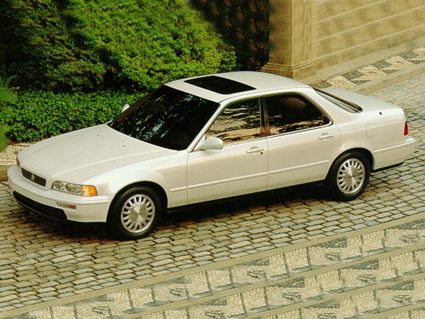 The Japan Domestic Market version of the 1990 Legend (second generation) was the first vehicle offered with a 260 hp (194 kW) engine and navigation system, although it was not satellite-based and instead relied on a gas gyroscope. The tooling and intellectual property rights of the second generation Legend were licensed to Daewoo Motors of South Korea, where a clone of the Legend sedan, called the Daewoo Arcadia, was produced from 1993 to 2000. During this period, Honda also held a small stake in Daewoo Motors.
The Japan Domestic Market version of the 1990 Legend (second generation) was the first vehicle offered with a 260 hp (194 kW) engine and navigation system, although it was not satellite-based and instead relied on a gas gyroscope. The tooling and intellectual property rights of the second generation Legend were licensed to Daewoo Motors of South Korea, where a clone of the Legend sedan, called the Daewoo Arcadia, was produced from 1993 to 2000. During this period, Honda also held a small stake in Daewoo Motors.The replacement for the Legend sedan is sold as the Acura RL in North America, although Honda continues to sell it as the Legend in most other areas of the world.
Acura RSX
 The RSX is somewhat familiar as a redesigned Integra. The current version has either a 160 or a 200 hp four-cylinder power plant, with the latter coming standard in the Type S. The more powerful engine makes its horses partly through an advanced valve timing technology, which shifts into high performance mode at 6,000 rpm. The result is a kick in the pants similar to that of a turbocharger suddenly spooling up.
The RSX is somewhat familiar as a redesigned Integra. The current version has either a 160 or a 200 hp four-cylinder power plant, with the latter coming standard in the Type S. The more powerful engine makes its horses partly through an advanced valve timing technology, which shifts into high performance mode at 6,000 rpm. The result is a kick in the pants similar to that of a turbocharger suddenly spooling up. The good news is that the RSX has superb handling and strong acceleration, especially if you are already running the engine fast, but it is easier to shift and to manage than many other sports cars. The bad news is that the engine is loud and raucous, not unlike the early Neon engines, and that makes you want to avoid going up to the speeds where the RSX really does its stuff. In everyday traffic, sprints that run up to 6,000 rpm are also relatively rare.
The good news is that the RSX has superb handling and strong acceleration, especially if you are already running the engine fast, but it is easier to shift and to manage than many other sports cars. The bad news is that the engine is loud and raucous, not unlike the early Neon engines, and that makes you want to avoid going up to the speeds where the RSX really does its stuff. In everyday traffic, sprints that run up to 6,000 rpm are also relatively rare.Because of the way the engine scales up to power, and also because of the ease of shifting, we recommend the manual over the automatic, though both get similar gas mileage. The Type S has a six-speed manual, but that’s not a good enough reason to buy one over a base RSX.
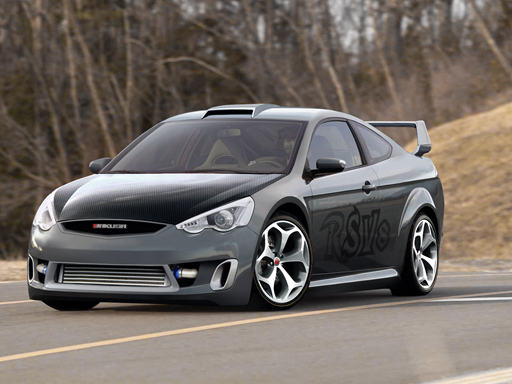 At high speeds, even the top gear lets the engine run fast, bringing a great deal of noise into the cabin. At lower speeds, the engine is quieter. The six-speed is closely spaced, which can sometimes make choosing a gear more difficult.
At high speeds, even the top gear lets the engine run fast, bringing a great deal of noise into the cabin. At lower speeds, the engine is quieter. The six-speed is closely spaced, which can sometimes make choosing a gear more difficult.Handling is excellent, with the RSX whipping around turns with almost no body roll, responsive steering, and absolutely no sense of uncertainty. The tight steering helps drivers to get the most out of the RSX’s turning ability. It can deal with bumps and rain, as well, unlike some other suspensions we could mention. The only drawback is almost inevitable in front wheel drive – while the wheel doesn’t leap to one side when you hit the gas, you do lose some steering ability as the front tires are asked to do two things at once. This usually is not a problem.
 The decision to brand the RSX as an Acura instead of a Honda is odd when you consider the ride, which in the Type S at least is compromised to bring you outstanding handling. Thus, despite the luxury car name, the RSX Type S has a very firm ride that lets you feel, albeit cushioned, every bump and road imperfection.
The decision to brand the RSX as an Acura instead of a Honda is odd when you consider the ride, which in the Type S at least is compromised to bring you outstanding handling. Thus, despite the luxury car name, the RSX Type S has a very firm ride that lets you feel, albeit cushioned, every bump and road imperfection. The Acura label does apply to the amenities, at least. The climate control uses round vents which reduce noise and can easily be closed, and the chrome and black instrument panel is very tastefully done for a sporty yet somewhat elegant look.
The Acura label does apply to the amenities, at least. The climate control uses round vents which reduce noise and can easily be closed, and the chrome and black instrument panel is very tastefully done for a sporty yet somewhat elegant look.It avoids BMW-blandness and Audi TT-garishness. At night, the Type S’ black-on-white gauges have red back lighting, with thin circles outlining the speedometer and standard tachometer. The result is surprisingly pleasant and sporty. The only distractions are the odometer, whose red numbers bring up a sense that a warning light is on, and the speedometer, which goes up to 160 mph and uses only 270 degrees of a circle to do it. The result is that the speeds most people spend most of their time at are all compressed into a very small space.
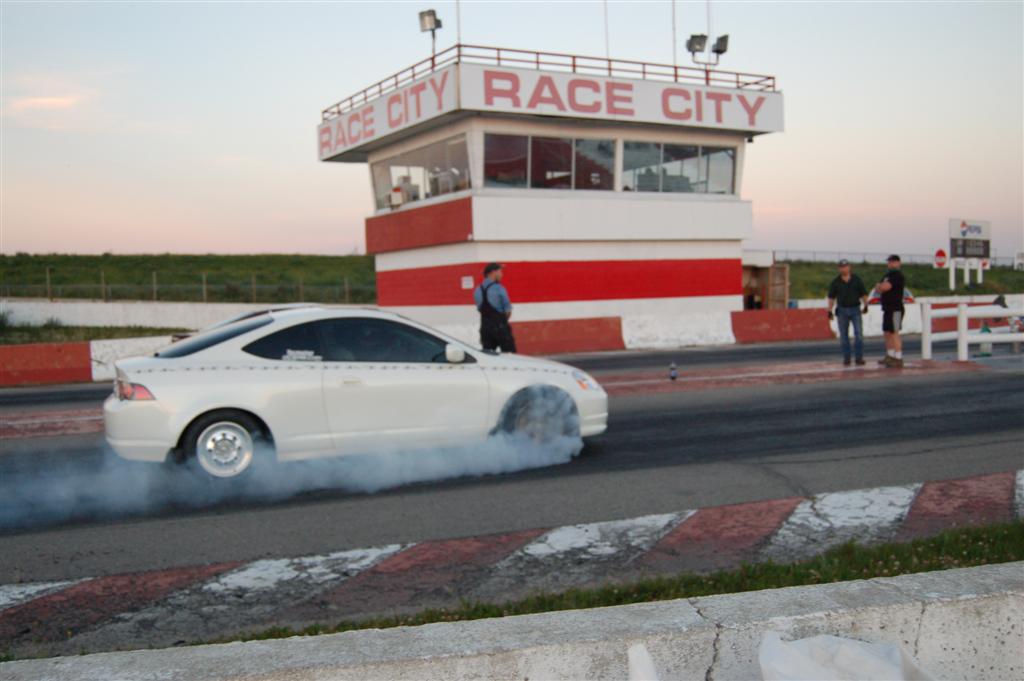 The controls are all easy to use, including the sensibly designed climate control and stereo. The thermostatic climate control uses three knobs, with buttons in the center, making them easy to use without being distracting. The cruise control is activated by a button on the dash, but remembers its setting even after you shut the engine. The cruise buttons are on the steering wheel,and are very large to make them easier to use.
The controls are all easy to use, including the sensibly designed climate control and stereo. The thermostatic climate control uses three knobs, with buttons in the center, making them easy to use without being distracting. The cruise control is activated by a button on the dash, but remembers its setting even after you shut the engine. The cruise buttons are on the steering wheel,and are very large to make them easier to use.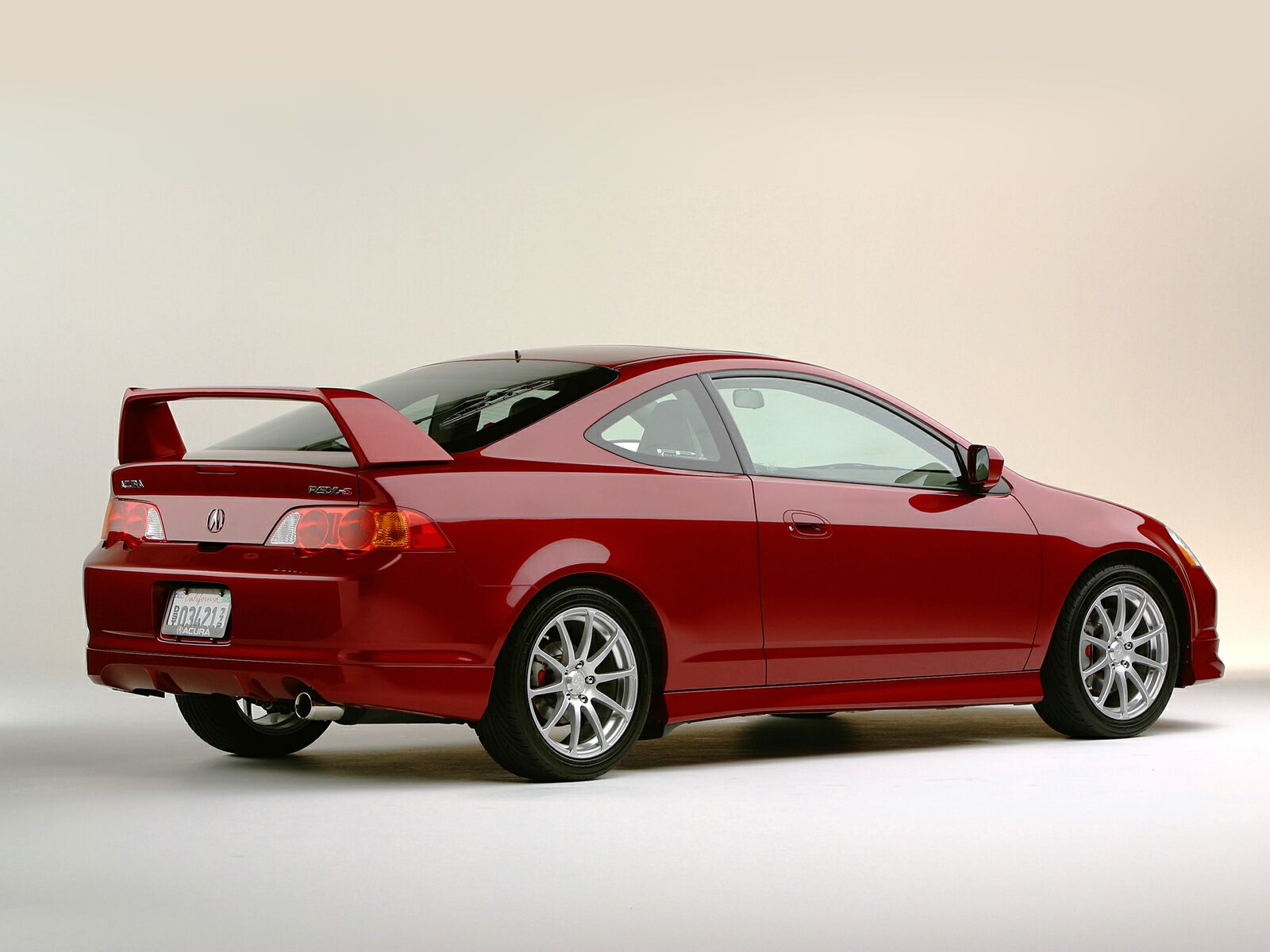 There is a sliding bin on the center console which contains both a shallow storage area and deep cup holders. Both doors have map pockets, and there is a depression between the front seats that can be used for temporary storage. The storage area under the center stack is subtly lit at night, in red to preserve night vision.
There is a sliding bin on the center console which contains both a shallow storage area and deep cup holders. Both doors have map pockets, and there is a depression between the front seats that can be used for temporary storage. The storage area under the center stack is subtly lit at night, in red to preserve night vision.Visibility is compromised by the large rear pillars, which can make merging and backing up an adventure, while daily use of the RSX is hampered by massive, heavy doors and a seat belt which does not adjust up or down, and is placed too far back to be easily reached.
четверг, 21 июля 2011 г.
Acura TL
 The Acura TL is a mid-size sports sedan manufactured by Acura. It was introduced in 1995 to supplant the Acura Vigor and was rebadged for the Japanese-market from 1996 to 2000 as the Honda Inspire and from 1996 to 2004 as the Honda Saber. The TL was Acura's best-selling model until it was outsold most recently by the MDX since 2007, and it has ranked as the second best-selling luxury sedan in the United States behind the BMW 3 Series.Four generations of the Acura TL have been produced to date, with the latest fourth generation TL premiering in 2008 as a 2009 model. The current version is not sold in Japan.
The Acura TL is a mid-size sports sedan manufactured by Acura. It was introduced in 1995 to supplant the Acura Vigor and was rebadged for the Japanese-market from 1996 to 2000 as the Honda Inspire and from 1996 to 2004 as the Honda Saber. The TL was Acura's best-selling model until it was outsold most recently by the MDX since 2007, and it has ranked as the second best-selling luxury sedan in the United States behind the BMW 3 Series.Four generations of the Acura TL have been produced to date, with the latest fourth generation TL premiering in 2008 as a 2009 model. The current version is not sold in Japan. The TL "Touring Luxury" debuted as 1996 model, first with the 1996 2.5 TL available with the 2.5 L 176 hp (131 kW) SOHC 20-valve 5-cylinder engine from the Vigor. The 3.2 TL used the 3.2 L 200 hp (149 kW) SOHC 24v V6 from the second generation Acura Legend. The 2.5 TL was positioned as the sporty model and the 3.2 focused more upon a luxurious ride. The very first 1996 Acura TL rolled off the assembly line at Sayama, Japan on March 28, 1995. Sales of the 2.5 TL began in spring 1995, but the 3.2 TL was delayed until fall because of a U.S.-Japan trade dispute.
The TL "Touring Luxury" debuted as 1996 model, first with the 1996 2.5 TL available with the 2.5 L 176 hp (131 kW) SOHC 20-valve 5-cylinder engine from the Vigor. The 3.2 TL used the 3.2 L 200 hp (149 kW) SOHC 24v V6 from the second generation Acura Legend. The 2.5 TL was positioned as the sporty model and the 3.2 focused more upon a luxurious ride. The very first 1996 Acura TL rolled off the assembly line at Sayama, Japan on March 28, 1995. Sales of the 2.5 TL began in spring 1995, but the 3.2 TL was delayed until fall because of a U.S.-Japan trade dispute. For the 2012 model, Acura offered new front and rear styling. Acura updated the controversial "beak" insert in the front grill, replacing it with a smaller insert that flows better with the headlights and creates a sleeker profile.Aside from cosmetic changes, the new TL is now equipped with Honda's 6-speed automatic multi-clutch transmission to improve performance and efficiency. This transmission features downshift rev-matching with throttle blip and the ability to downshift 2 gears at a time. Additional new features include ventilated seats, new 60GB HDD, blind-spot information system, and upgraded wheels. The 2012 TL retains the base 3.5L and SH-AWD models' 3.7L engines but now gets 2 mpg more in the city (20 mpg) and 3 mpg more on the highway (29 mpg), thanks to less engine friction and the 6 speed automatic transmission. The 6 speed manual transmission will continue to be offered. The 2012 model is also 3dB quieter on the highway.
For the 2012 model, Acura offered new front and rear styling. Acura updated the controversial "beak" insert in the front grill, replacing it with a smaller insert that flows better with the headlights and creates a sleeker profile.Aside from cosmetic changes, the new TL is now equipped with Honda's 6-speed automatic multi-clutch transmission to improve performance and efficiency. This transmission features downshift rev-matching with throttle blip and the ability to downshift 2 gears at a time. Additional new features include ventilated seats, new 60GB HDD, blind-spot information system, and upgraded wheels. The 2012 TL retains the base 3.5L and SH-AWD models' 3.7L engines but now gets 2 mpg more in the city (20 mpg) and 3 mpg more on the highway (29 mpg), thanks to less engine friction and the 6 speed automatic transmission. The 6 speed manual transmission will continue to be offered. The 2012 model is also 3dB quieter on the highway.
Подписаться на:
Сообщения (Atom)



















